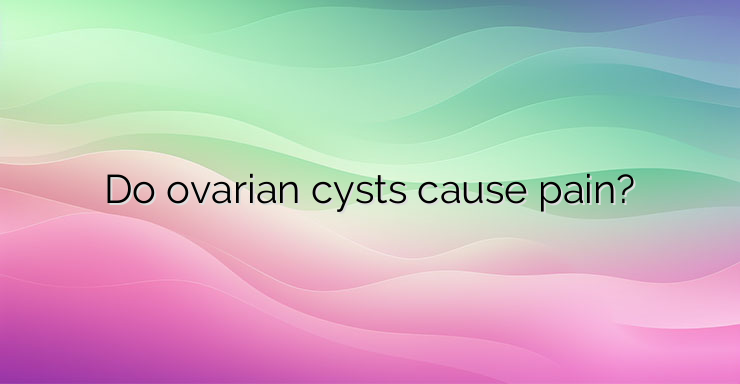Ovarian cysts are fluid-filled spherical masses, some of which contain tissue within them. They are enveloped by a capsule and usually reach sizes of the order of 1-3 centimeters. Ovarian cysts often develop under the influence of physiological changes in hormonal balance during puberty or menopause. In some cases, congenital cysts can also be observed. Most of them degenerate by themselves. It is estimated that about 10 out of 100 patients develop ovarian cysts. They are usually benign and rarely cause complications or significant symptoms that require treatment. Surgical intervention is usually not required for their removal. In the majority of cases, cysts are asymptomatic, but they can cause a dull pain in the lower abdomen – pelvic pain. In some cases, cysts lead to disorders of the menstrual cycle – heavy bleeding, irregular menstruation or the appearance of abnormal vaginal bleeding between cycles. This occurs when the cysts produce sex hormones that cause the lining of the uterus to grow. Larger cysts can reach and press on the bowel or bladder. This can cause bloating, a feeling of fullness and pressure, pain when urinating or constipation. Bursting a cyst can cause sudden pain, but usually causes no other symptoms. The increased weight of the cyst can sometimes cause torsion of the ovaries. This condition causes sudden, severe pain and cramping on the affected side of the lower abdomen, as well as nausea, vomiting, and a rapid heart rate. What are the different types of ovarian cysts? Most ovarian cysts develop during the first part of the menstrual cycle – when the eggs are growing and being released. These cysts are called “functional cysts” and develop mainly during puberty or during menopause. Such cysts can be observed in one or both ovaries at the same time. The most common types of functional ovarian cysts are: Follicular cysts – if the ovarian follicle does not release an egg and ovulation does not occur, it can gradually fill with fluid and form into a cyst. Corpus luteum cysts – these occur when the corpus luteum fills with blood. The corpus luteum develops from the follicle that releases the egg during ovulation. It secretes the sex hormones progesterone and estrogen. Theca lutein cysts – usually seen with hormone therapy for infertility. Hormones stimulate the growth of eggs in the ovaries, and a common side effect is the appearance of cysts. Endometriomas – these are filled with dark, thick blood. They can develop with endometriosis. Dermoid cysts – these are not functional cysts and are less common. They contain skin cells and sebaceous glands. Sebaceous glands produce sebum that accumulates inside the cyst.In rare cases, they transform into malignant cysts. In polycystic ovary syndrome, multiple small-sized cysts are observed in the ovaries. This disease is characterized by the increased level of male sex hormones – androgens, which disrupt the maturation of eggs. Complications from ovarian cysts are also rare. They can occur when the fluid from the cyst leaks into the space that surrounds it. This can cause pain, but rarely leads to complications. Bleeding requires surgical intervention. More serious complications occur when the ovary twists around the tissue that supports it. This is characteristic of cysts of larger sizes – often after sudden movements. Ovarian torsion is very painful. It can also cause the blood supply to the ovary to stop. In these cases, urgent surgical intervention is necessary. References: https://www.ncbi.nlm.nih.gov/books/NBK539572/#:~:text=Most%20women%20who%20have%20ovarian,abnormal%20vaginal%20bleeding%20between%20periods).


Leave a Reply